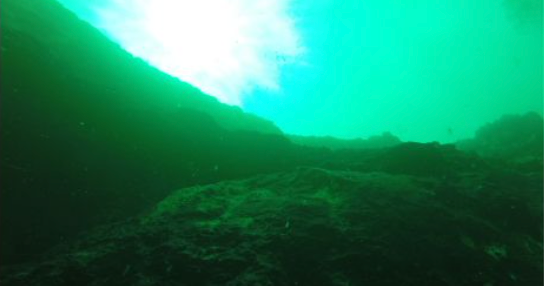Sinkholes don’t just happen on land, they also happen in the ocean where they’re known as blue holes. And now, researchers say they’ve found the deepest one yet on the planet – one so large that they can’t even get to the bottom.
It’s the Taam Ja’ Blue Hole in Mexico’s Chetumal Bay, once thought to be the world’s second-deepest known blue hole. But as researchers explained in an article published in the journal Frontiers in Marine Science on Monday, scuba divers went to the site at the beginning of December to take another look, and found it was far bigger that first thought.
“The TJBH is now the deepest blue hole discovered to date, exhibiting water depths surpassing 420 mbsl [meters below sea level], with its bottom yet to be reached,” authors said in their journal article. The newly-recorded depth amounts to just over a quarter-mile below sea level into the mesopelagic zone, an area otherwise known as the twilight zone since sunlight in this layer is significantly reduced.
Previously, Taam Ja’ was thought to have a depth of roughly 274 mbsl when researchers used a device known as an echo sounder to try and calculate its size based on the distance that sound waves travel. But because the shape of blue holes isn’t predictable and water density can vary, that method was limited. This time around, they used a method known as SWiFT CTD that better measures conductivity, temperature and depth underwater. However, the instrument was not able to reach the bottom of Taam Ja’.
The updated size places it far beyond the depths of other known underwater sinkholes, such as the South China Sea’s Sansha Yongle Blue Hole, which measures at about 301 mbsl, the Dean’s Blue Hole in the Bahamas, which has a depth of roughly 202 mbsl, and the Dahab Blue Hole in Egypt, which has a depth of roughly 130 mbsl.
Alcérreca-Huerta et al. Frontiers in Marine Science (2024)
Blue holes may sound scary, but according to NOAA, each one can be an “oasis in an otherwise barren seafloor.”
“Blue holes are diverse biological communities full of marine life, including corals, sponges, mollusks, sea turtles, sharks and more,” NOAA says, adding that little is known about the areas because they are largely inaccessible and their distribution is widely unknown.
“The opening of a blue hole can be several hundred feet underwater, and for many holes, the opening is too small for an automated submersible,” NOAA says. “In fact, the first reports of blue holes did not come from scientists or researchers, but actually came from fishermen and recreational divers.”



